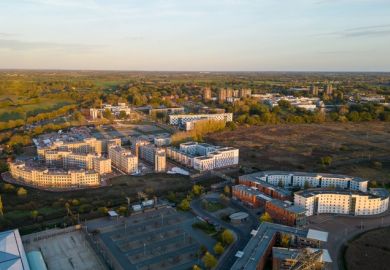The number of people employed in the UK higher education sector has passed 400,000 for the first time, figures show.
Overall, 403,835 people were employed at UK universities on 1 December 2014, up 2 per cent from 395,780 at the same point in 2013, according to data published by the Higher Education Statistics Agency on 21 January.
Of these people, almost half (198,335, or 49 per cent) were employed on academic contracts, a rise of 4,100 on the previous year, says the report, Staff at Higher Education Providers in the United Kingdom 2014/15.
The number of academics employed on a full-time basis – 132,865 – climbed even higher, up by 4 per cent on the 2013-14 total.
Of those extra full-time staff, the majority (2,535) were female academics, whose full-time numbers increased by 5 per cent compared with December 2013.
However, those rises were partially offset by a reduction in part-time academics, whose numbers fell by 1 per cent over the same period.
The latest statistics also reveal that the number of female professors rose once again, up to a total of 4,535 in 2013-14. There were just over 15,000 male professors.
This means that women now account for 23 per cent of professors, up from the 22 per cent reported in Hesa’s previous statistical release.
The latest report explains that 65 per cent of academics are employed on open-ended or permanent contracts, with 35 per cent on fixed-term contracts, including rolling contracts.
The number of staff on teaching-only contracts dipped despite the increase in overall academic numbers.
Some 51,970 academics were employed on teaching-only contracts in December 2014, down from 52,575 one year earlier. Overall, some 96,550 academics were employed on dual teaching and research contracts.
A total of 205,500 people worked on so-called “non-academic” contracts in the 2013-14 academic year, with the number of professional and support staff up by 2 per cent compared with a year earlier.
In addition to the 403,835 members of staff working at universities, a further 75,560 people were employed on “atypical contracts”.
These include those employed for less than four consecutive weeks, on one-off or short-term tasks, such as organising conferences or answering phones, and other jobs defined by Hesa as being characterised by a “high degree of flexibility”.
Once these people are included, the total number of staff employed by the sector could exceed 500,000 as universities are required to report only atypical academic staff, although many do report atypical staff employed in professional or support roles.
Register to continue
Why register?
- Registration is free and only takes a moment
- Once registered, you can read 3 articles a month
- Sign up for our newsletter
Subscribe
Or subscribe for unlimited access to:
- Unlimited access to news, views, insights & reviews
- Digital editions
- Digital access to THE’s university and college rankings analysis
Already registered or a current subscriber?




